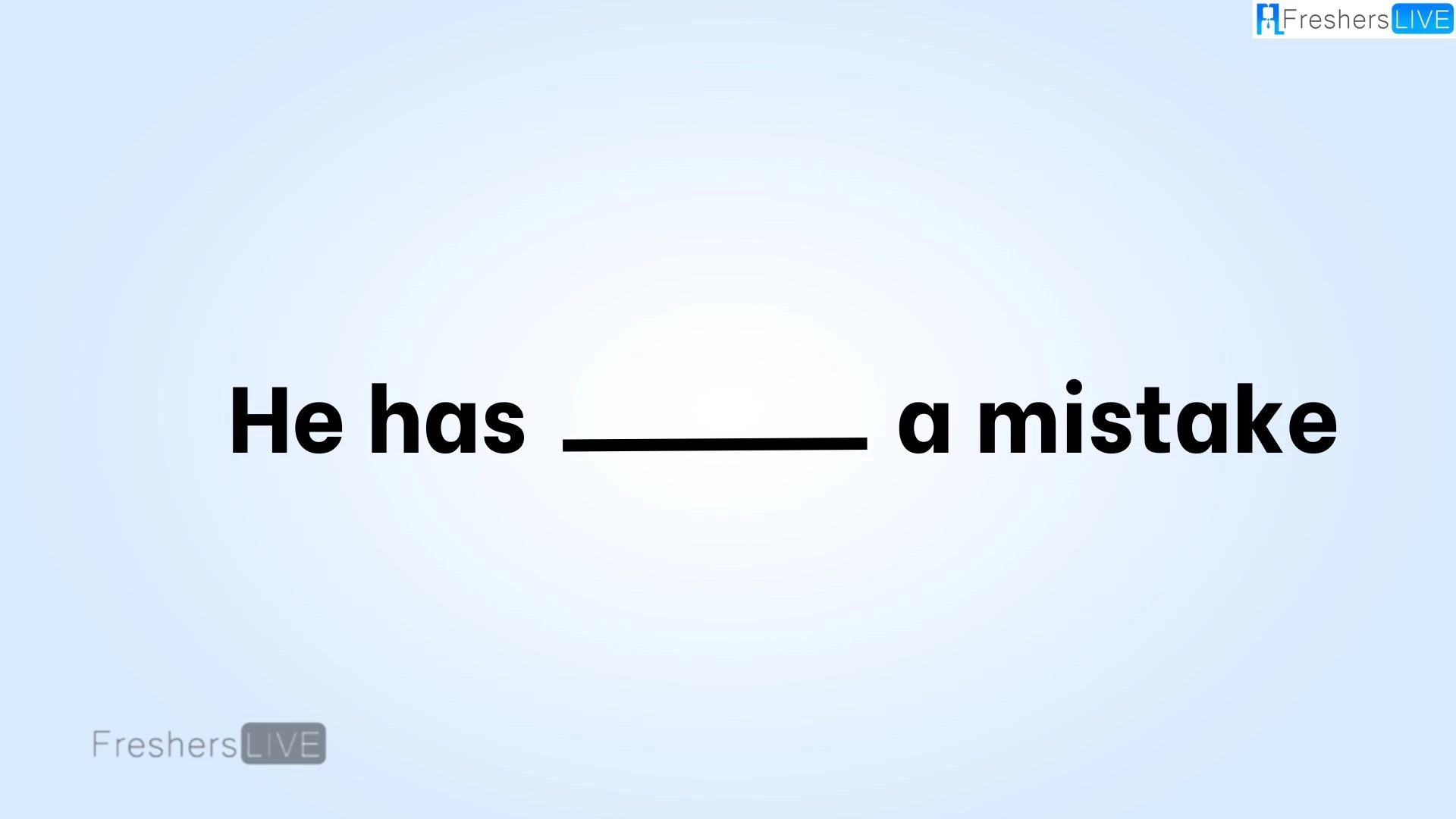Crack this English grammar challenge with 5 questions from this puzzle
Explore the world of grammar puzzles. These puzzles provide you with situations that require you to use your grammar skills and creative thinking. They keep your mind active and may even help you reduce stress. There are many different grammar challenges to enjoy, including the ones that follow.
This challenge can be a little tricky and is best for those who are really good at grammar and notice the small details. When you become an expert at these types of puzzles, you get more than just fun, it gives you skills that will help you in many aspects of life. Although the puzzle may seem difficult at first, your goal is to find a solution that completely follows the rules of grammar and reveals the secrets of the puzzle. The next section explains this syntax dilemma in detail and shows you how to solve it.
1.He made ____ mistakes
The word “made” is used in the sentence “He made a mistake” because it indicates that someone took an action or performed an activity in the past, which in this case was a mistake. In English, the word “made” is the past participle form of the verb “make”. When combined with “has” (the auxiliary verb “have” of the present perfect tense), it forms the present perfect tense. The present perfect tense is used to describe actions or events that relate to the present, even if they occurred in the past.

2. She didn’t keep her promise
The word “withheld” is used in the sentence “She didn’t keep her promise” to mean that someone has failed to fulfill a promise or promise they made in the past. In this sentence, “kept” is the past participle form of the verb “keep.” When combined with “hasn’t” (short for “has not”), it forms the present perfect tense in its negative form. The present perfect tense is used to describe actions or situations that relate to the present, even if they happened in the past. So, in simple terms, this sentence is saying that “she” made a promise or commitment in the past, but she failed to deliver or fulfill it, and this lack of fulfillment relates to the present.

3.I am ____Italy
The sentence “I am in Italy” uses the word “in” to indicate a location. It specifies where the subject (in this case “I”) is or was at a particular point in the past. Grammatically speaking, “in” is a preposition. Prepositions are words that express relationships between other words in a sentence. In this case, “in” represents the relationship between subject (“I”) and location (“Italy”). It tells us where “I” am.

4. Have you ever____owned a car?
The word “driving” is used in the sentence “Have you ever driven a car?” Because it represents the past participle form of the verb “drive”. In this context, it is used to ask whether someone has had experience operating or controlling a car at any point in their life.
Grammatically, “driven” is a past participle, used with the auxiliary verb “have”. The combination “have Drive” is used to create the present perfect tense. The present perfect tense is used to describe actions or experiences that are relevant to the present, even if they occurred in the past.

5.I saw you ____ arguing
The word “Weren’t” is used in the sentence “I see you were not arguing” to indicate that no argument occurred in the past. In terms of grammar, “weren’t” is the abbreviation of “were not”, which is the negative past tense of the verb “to be”. In this context, “weren’t” is used to indicate the behavior of someone who was not involved in an argument at some point in the past.

Solve equation 264 ÷ 12 + 7 x 3 – 36 ÷ 6=?
To solve this calculation, follow the order of operations. Division and multiplication proceed from left to right: 264 ÷ 12 equals 22, and 36 ÷ 6 equals 6. The equation becomes 22 + 7 x 3 – 6. Now, multiplication and addition/subtraction from left to right: 7 x 3 equals 21, and 22 + 21 equals 43. Therefore, the solution is 43.
Whether you’re a student, a professional, or someone who just enjoys a good mental workout, NEWSTARS Education is your destination. Our brainteasers vary in complexity, ensuring something for everyone.
trend
Are you sure 288 ÷ 12 + 8 x 4 – 54 ÷ 6=?
For this problem, please apply the order of operations. Division and multiplication proceed from left to right: 288 ÷ 12 equals 24, and 54 ÷ 6 equals 9. The equation becomes 24 + 8 x 4 – 9. Next, multiply, add and subtract from left to right: 8 x 4 equals 32, and 24 + 32 equals 56. Therefore, the answer is 56.
Disclaimer: The above information is for general information purposes only. All information on this website is provided in good faith, but we make no representations or warranties, express or implied, as to the accuracy, adequacy, validity, reliability, availability or completeness of any information on this website.
